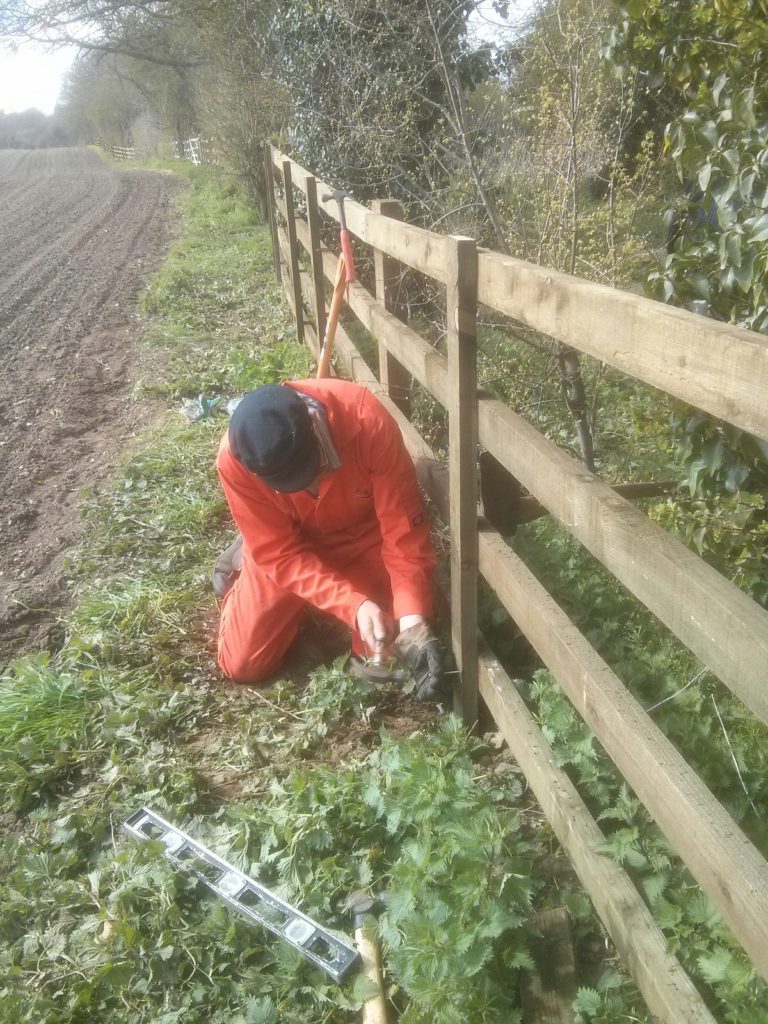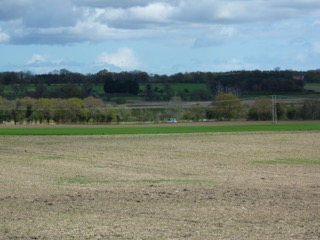
Today, after the now-obligatory coffee at the Community Café (in
which we were almost the only customers), we made the usual split into
workshop and trackbed. The former team completed the locomotive carrying
device for the Blyth Valley Light Railway, and completed the first
undercoat on Peter Nicholson’s Motor Rail loco (with Williamsons’
special locomotive paint – lovely to use, and well worth its cost).
On the trackbed, as a previous team had already completed the entire
fence run to the driftway crossing, a team of three tackled the east end
section – all that remains to do on the southern boundary. The first
fence post hole was a humdinger, being infested by roots, each requiring
sawing and chopping with a sharpened spade: we were reduced to taking
handfuls of soil out by hand. But it got done – and after that it was
plain sailing until we reached a very large oak exactly where the fence
post should go. Luckily, there was a convenient, but deserted, rabbit
hole close by – so, not wanting to damage the tree roots, we took the
rabbit route. In the end we completed six 4-yard panels, despite a
couple of hailstorms – only 18 panels (we say only, but that’s still 18
holes dug by hand, 92 pieces of timber – all transported from Galloway
and then carried almost half a mile – and over 600 nails), left to do to
the end of the wood, where the phase I buffer stop is planned to be
situated.

We were pleased to find the stump of an original 1879 fence post en route – confirming that we were on the original boundary.
Now it’s greening up again, the trackbed is a very nice place just to
sit and watch the Blyth Valley (we do manage quite a lot of tea breaks –
after all, none of us are being paid!) – we were entertained by a long
single-file herd of cows (or possibly bullocks – hard to tell at that
distance) stumping along the other side of the navigation, swans
nesting, and, we think, egrets displaying. And no – before anyone asks –
none of this wildlife would be in any way adversely affected by our
small 10mph trains, as can easily be seen at Weybourne, Brockford,
Kimberley Park, and Coltishall alongside other, larger, East Anglian
heritage railways.
